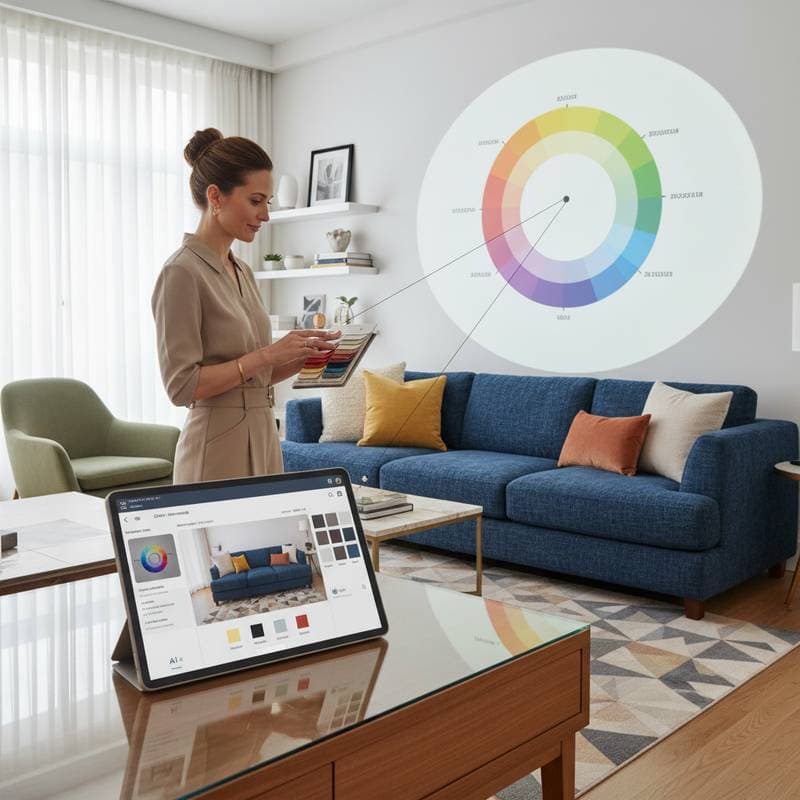Warm Lighting Ideas to Transform Your 2025 Living Room
Why Warm Light Defines 2025 Interior Design
Imagine stepping into a living room that instantly feels like a comforting embrace, not from plush furniture, but from the glow of carefully chosen light. In 2025, warm lighting stands as a cornerstone of interior design, shaping mood, defining spaces, and enhancing every surface it touches. This guide explores how warm LEDs can turn any living room into a cozy, camera-ready haven, aligning with the latest fall 2025 trends. Drawing from professional experience in TV set design and client projects, these ideas offer practical, stylish solutions for any budget.
Key Trends Driving Warm Lighting in 2025
Fall 2025 lighting trends prioritize human comfort alongside sustainability, a balance evident in both quick makeovers and extensive renovations. Warm white LEDs, ranging from 2700K to 3000K, dominate living room designs with their soft amber glow, reducing eye strain and flattering skin tones in person and on camera. Layered lighting systems, combining ambient recessed lights, task lamps, and accent fixtures, integrate with smart hubs for seamless control. Sustainable materials like recycled brass, bamboo, and reclaimed glass, along with biophilic designs such as branch-like pendants, connect indoor spaces to nature, a defining theme this season.
Living rooms today serve multiple roles, from work zones to relaxation hubs. Warm lighting creates distinct areas without physical barriers, using cooler 3500K task lights for focus in work corners while maintaining a warm ambiance elsewhere.
Practical Warm Lighting Strategies for Instant Impact
Start with a three-point lighting approach for depth and flexibility. Install dimmable recessed LEDs or a semi-flush mount with a warm white diffuser as ambient ceiling light, pair it with adjustable brass floor lamps featuring linen shades for reading nooks, and crown the setup with a hand-blown amber glass pendant over a coffee table for both light and artistry.
Incorporate smart controls for tailored experiences. Systems like Philips Hue or Lutron Caseta allow preset scenes such as a Morning Boost at 80 percent brightness and 3000K for energy, an Evening Unwind at 30 percent and 2700K for relaxation, or a Movie Night with low bias lighting behind the TV to ease eye strain. Add voice commands and motion sensors in low-traffic areas to enhance convenience and energy savings.
Select fixtures with natural materials to amplify warmth. Warm metallics like brass, bamboo shades, or terracotta pendants not only diffuse light beautifully but also align with 2025’s earthy aesthetic, adding texture and authenticity to your space.
Budget-Friendly DIY Lighting Upgrades
Great design does not require a hefty budget. Transform your space with upcycled filament-style LED bulbs in warm tones, paired with matte black sockets for an industrial vibe, costing between $8 and $30 per bulb. Craft fabric-wrapped floor lamps using a simple base and DIY linen shade for $15 to $60, softening light with added texture. For a no-wiring option, cluster battery-operated LED candles in glass vases for under $40, delivering flicker-free warmth ideal for renters or quick updates.
Essential Tips for Flawless Execution
Calculate lumens precisely for balanced illumination: aim for 2000 to 2500 lumens in main seating areas, 400 to 600 in reading nooks, and 150 to 300 per accent fixture, all in the 2700K to 3000K range. Dimming remains essential, as even warm LEDs can feel harsh at full strength; install circuit dimmers or smart controls to adjust brightness by 20 to 30 percent for instant mood shifts. Pair lighting with your room’s color palette, increasing lumen output for dark walls like navy, or scaling back with reflective pale tones. For sustainability, prioritize LEDs with 80 lumens per watt, add occupancy sensors, and choose recyclable fixtures.
Real-World Inspiration From Design Projects
In a New York urban loft project titled The Autumn Nest, recessed 2700K LEDs with a 30 percent dimmer, a brass pendant, and amber LED strips behind the TV created a family-friendly space, boosting perceived comfort by 40 percent and cutting evening energy use by 15 percent. In an Austin suburban home aiming for LEED Gold standards, recycled brass fixtures and 2700K bulbs at 90 lumens per watt, paired with occupancy sensors, achieved both warmth and certification, complementing oak flooring and outdoor views.
Your Step-by-Step Lighting Remodel Plan
- Audit current lighting by listing every fixture’s wattage and color temperature.
- Map out zones for seating, work, and accents on a room sketch.
- Choose one warm white ambient source, a task lamp, and an accent piece per zone.
- Plan dimmers and smart hubs, consulting an electrician for safety compliance.
- Opt for sustainable materials like recycled metal or bamboo in fixtures.
- Install, program scenes, and test angles to minimize glare.
- Adjust settings after a week of use, noting optimal brightness and positions.
Making Warm Light a Daily Delight
Integrate lighting into everyday life by testing scenes for morning energy, workday focus, and evening calm. Keep spare bulbs in matching color temperatures for consistency, and adjust smart controls seasonally as daylight shifts. Share control tips with household members to maximize energy savings. With these steps, warm light will elevate your 2025 living room into a welcoming, functional retreat every day.








